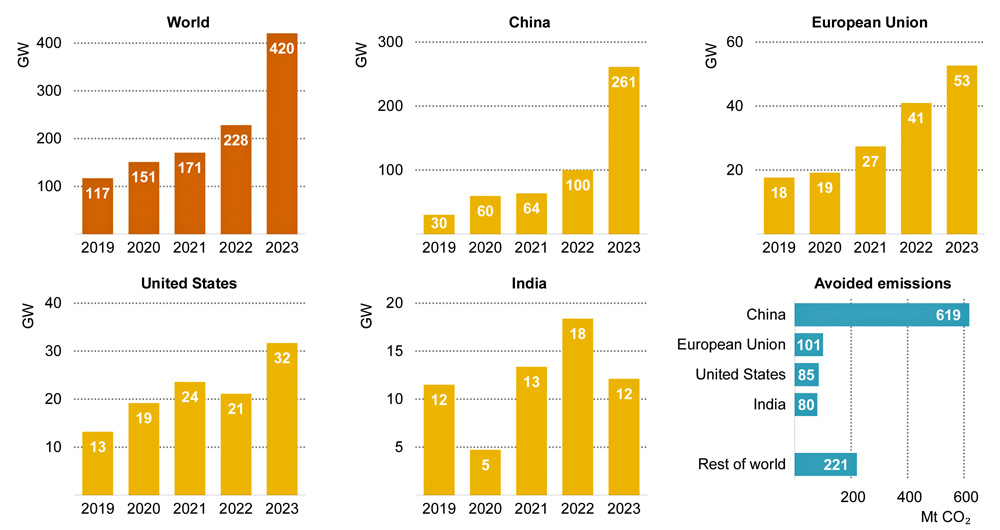New Jersey’s Senate Environment and Energy Committee unanimously approved a bill March 4 requiring electric utilities to develop plans for upgrading their distribution infrastructure to increase renewable generation capacity.
The bill would give the state’s four utilities 90 days to draft and submit a plan to the Board of Public Utilities, with a goal of reopening “many of the state’s electric distribution circuits that have been closed to any additional renewable energy installations, or restricted to 100 kilowatts or less of remaining circuit capacity” (S2816). The bill gives the BPU 30 days to approve or modify each plan; utilities would be required to schedule the work “at the earliest date possible.”
The committee also approved bills to restrict new fossil fuel generation and divest oil and gas investments on party-line votes at its March 4 meeting.
Committee Chair Bob Smith (D), co-sponsor of the distribution upgrade bill, said it would “allow us to get more solar into New Jersey residential homes” at a relatively modest cost.
Still, he added, “this bill doesn’t say you must do” the upgrades, but instead requires the utility to submit a plan to the BPU, which then decides how to proceed.
“What we’re saying by the bill is ‘Let’s get it done,’” Smith told the committee.
Many Rejections
The bill, which the committee backed 5-0, comes as New Jersey, like other states, is struggling to connect a surge of renewable energy projects to the grid in a timely fashion.
Solar developers say the problem is particularly egregious in Atlantic City Electric’s territory in South Jersey, where connections can take months or years. (See Solar Developers: New Jersey’s Aging Grid Can’t Accept New Projects.)
“There’s a lot of rejections coming down,” said Fred DeSanti, executive director of the New Jersey Solar Energy Coalition, which proposed the bill to Smith. Developers are going into the utility with a planned solar rooftop or ground mount project “and the utility says, ‘You can’t connect there; we can’t do it,’” he said.
“It’s a first step, taking the worst problem first,” he said of the bill, adding he expects the industry to be addressing interconnection problems for a decade or more. In this case, the bill focuses on improving customers’ ability to connect to the distribution system, rather than addressing the transmission system.
The bill would require each utility plan to address issues such as how to permit the flow of electricity from the distribution system through an electrical substation to the transmission system, and to “include, activate and utilize all available inverter technology.” The bill also requires the plans to include any inverters needed to implement energy storage systems.
Brian O. Lipman, director of the state Division of Rate Counsel, urged the BPU in a March 1 letter not to back the legislation. He said the plans required by the bill would be too complicated to be properly evaluated in the period allowed and would “very likely cause ratepayers to grossly overpay for imprudent and unreasonable costs.”
Addressing the committee March 4, Lipman said the legislation should give the utilities more time to craft a plan and the BPU more time to review it. The BPU also should be allowed to reject a utility’s plan, not just approve or modify it, he said.
“Part of the process at the BPU is vetting out the ones that are good, making sure that those are done, and making sure the ones that are not so good are actually taken off the table,” he said.
Smith said he will amend the legislation to add a denial option and provide longer timelines.
Constitutional Amendment
The Democrat-controlled committee also backed a bill that would seek to amend the state constitution to prohibit construction of new fossil fuel power plants, except for peaker units, on a 3-2 vote (SCR11). If the legislation is enacted, the issue would go to voters to decide whether to back the prohibition.
The bill would prohibit the state from granting any approvals for the construction of a plant “that produces electric power, in whole or in part, from the combustion of coal, natural gas, oil or petroleum products.” The legislation also prevents anyone from building such a plant.
“This bill is an attempt to be reasonable about our fossil fuel electric power generation,” said Smith, a bill co-sponsor. Instead of saying, “Shut the switch off now,” he said, the bill allows fossil fuel plant to continue generating until “the end of the useful life.”
The committee first discussed the bill at a Feb. 5 hearing to solicit public opinion without a vote. After receiving comments that relying on renewable energy without peaker plants would threaten reliability, Smith revised the legislation to allow for the construction of new peaker plants.
Even so, Dennis Hart, executive director of the Chemistry Council of New Jersey, which represents more than 60 manufacturers, said the bill could threaten the energy sources on which his members rely. He said they already pay 50% more for energy than manufacturers in other parts of the company.
The state’s nuclear plants, which produce about 30% of the state’s energy, are already 60 years old, and their future performance can’t be assumed, he said, adding later that the state needs a “diversity” of energy sources.
“We need a reliable, cost-effective source of electricity,” he said. “And I think it’s shortsighted to cut out fossil fuel generation.”
Misinformation
Environmental groups also had concerns about the bill. David Pringle, speaking against the bill on behalf of Empower New Jersey, an environmental group, said the focus of the amended bill was too narrow, and would only prevent the construction of “new gas plants of a very large nature.” Those plants, he added, are not likely to be built anyway because they are no longer economically feasible.
Anjuli Ramos-Busot, the director of the New Jersey chapter of the Sierra Club, also opposed the bill, saying the state already has enough peaker plants to support renewable energy, and any attempt to update them would be limited by the state’s Environmental Justice law, which took effect in 2023.
She said the organization is also worried that taking the issue to a voter campaign would unleash a flood of misinformation about clean energy.
“We’ve seen a decrease — a slight decrease — in support for offshore wind, because of misinformation, because of the fossil fuel industry pouring in millions and millions of dollars to misinform the public,” she said. “Our fear is that we won’t be able to compete. Sierra Club is an environmental nonprofit; we don’t have millions of dollars to spend in a campaign to educate properly the public and deny the misinformation.”
Before moving the bill for a vote, Smith said “all the experts that I’ve talked to feel that you got to have some peakers,” suggesting they should be permitted under the bill. He added that he is not afraid of triggering a heated campaign.
“I have a lot of faith in the voters of New Jersey,” he said. “I think they can figure it out.”
Investment Pressure
The committee also backed, by a 3-2 partisan-line vote, a second bill that had been discussed on Feb. 5 but not voted upon so that public input could be evaluated. The bill, S198, sponsored by Smith, would prohibit the state from investing “in any stock, debt, or other security of any company, or any subsidiary, affiliate, or parent of any company, that is among the 200 largest publicly traded fossil fuel companies, as established by carbon content in the companies’ proven oil, gas, and coal reserves.”
Ray Cantor, senior lobbyist for the New Jersey Business and Industry Association, said that given that the state’s pension fund is underfunded by $80 billion, “it’s bad policy to use the pension to try and drive public policy.”
But Smith said that the impact of climate change is too great to continue supporting fossil fuel companies.
“My hope is that if they get called out by enough state governments, the federal government, that maybe they’ll change what they do,” he said.

